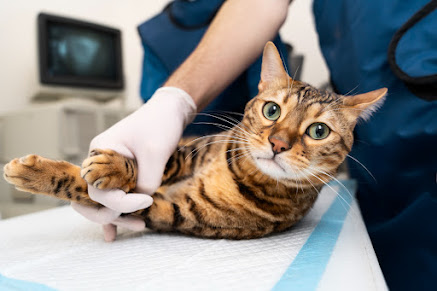A Raw Food Revolution for Cats: The Benefits of the BARF Diet
Feeding cats a BARF diet (Biologically Appropriate Raw Foods or Bones and Raw Foods) may not sound appealing, but it is a highly effective way to provide cats with a nutritionally balanced diet while satisfying their natural carnivorous instincts. In this article, we will explore the concept of a BARF diet for cats, address concerns regarding safety, discuss its benefits, and provide guidelines for preparing a homemade BARF diet.
Understanding the BARF Diet for Cats:
A BARF diet for cats aims to replicate what felines would consume in the wild. It includes uncooked muscle meat, bones, and organs, which are rich in essential nutrients such as protein, taurine, fatty acids, vitamins, and minerals. To achieve a balanced BARF diet, pet owners can either prepare homemade raw cat food or purchase prepackaged raw meals from reputable pet food manufacturers.
Addressing Safety Concerns:
Two primary concerns surrounding BARF diets for cats are nutritional imbalances and bacterial contamination. While prepackaged raw pet food options are typically complete and balanced, homemade diets require careful attention to ensure proper nutrition. It is crucial to mimic a cat's natural diet by incorporating the right proportions of organs, bones, vitamins, and supplements. Moreover, handling and cleaning procedures must be followed diligently to prevent bacterial contamination. Reputable manufacturers of prepared raw foods adhere to rigorous safety measures, ensuring the elimination of harmful bacteria.
The Benefits of a BARF Diet for Cats:
Cats are obligate carnivores, and a BARF diet offers several benefits for their overall health. Improved digestion, reduced stool odor and volume, healthier coats with fewer hairballs, increased energy levels, improved urinary health, better weight control, and enhanced dental health are some of the notable advantages of a BARF diet. The absence of heat processing in raw food maintains higher levels of proteins, nutrients, and hydration, addressing common issues such as kidney and urinary problems in modern cats.
Preparing a BARF Diet for Cats:
While preparing a homemade BARF diet may seem daunting, with the right knowledge and practice, it becomes manageable. Essential ingredients for a complete and balanced raw diet include meat, organs, bones, fat, egg yolks, water, and supplements like taurine, vitamin E, vitamin B complex, and fish oil. Resources such as the Feline Nutrition Foundation and CatInfo.org provide recipes and step-by-step instructions for preparing a BARF diet. For added convenience and assurance of balanced nutrition, pet owners can consider supplementing homemade raw food with prepared raw food or high-quality wet and dry canned food from pet stores.
Expert Perspectives:
Veterinarians specializing in animal nutrition acknowledge the benefits of incorporating raw foods into a cat's diet, particularly for managing chronic illnesses. However, it is advisable to consult a veterinarian-nutritionist to formulate a BARF diet tailored to an individual cat's needs. While many veterinarians receive limited nutritional instruction, seeking guidance from a certified animal nutritionist can provide more accurate advice.
Conclusion:
Switching to a BARF diet for cats can offer numerous benefits by providing them with a nutritionally balanced and species-appropriate diet. Although safety concerns exist, proper handling, preparation, and sourcing of raw ingredients can mitigate these risks. Whether preparing homemade raw food or combining it with minimally processed selections, pet owners have the opportunity to enhance their cat's health and well-being through the power of a BARF diet.






